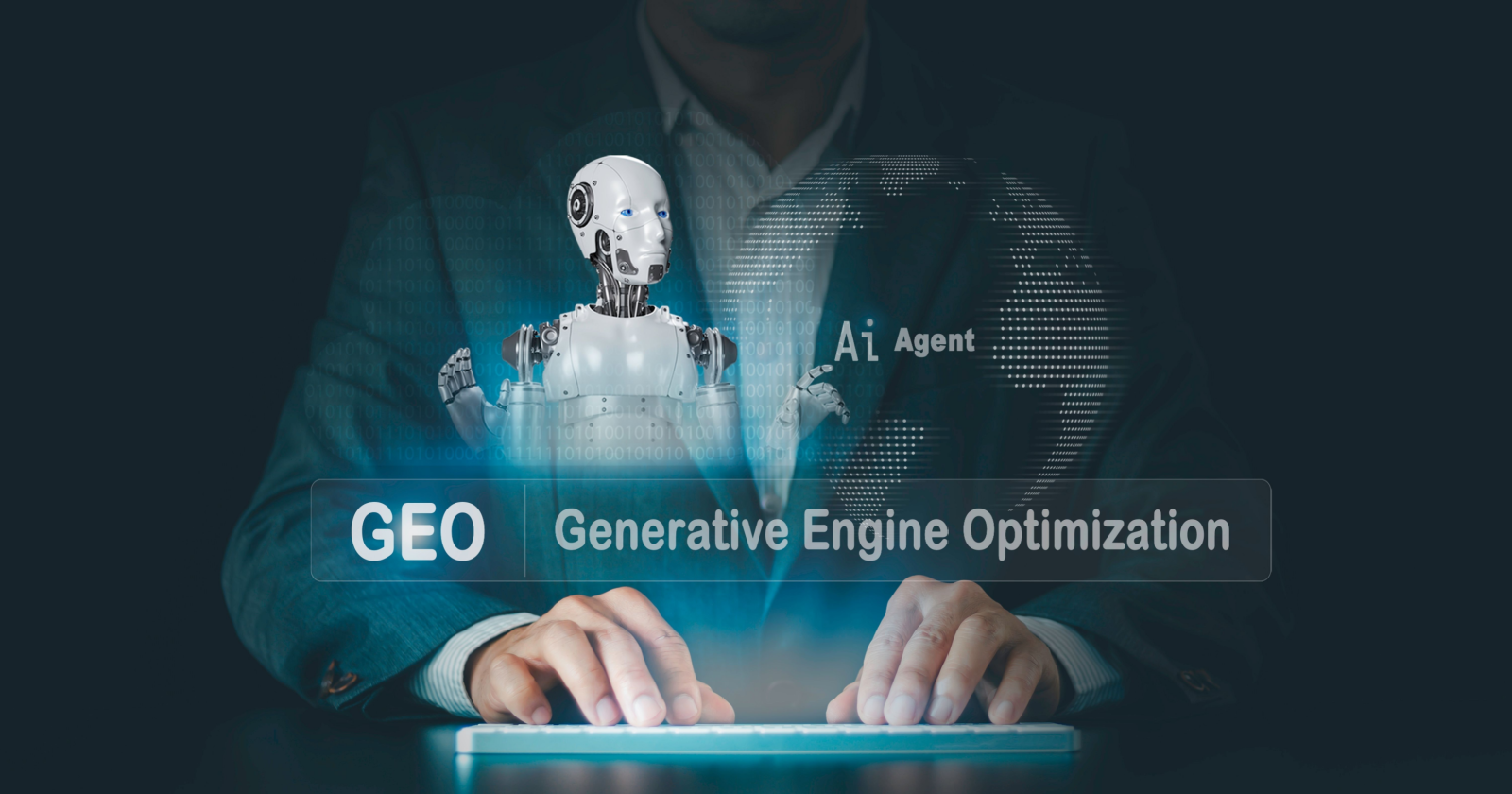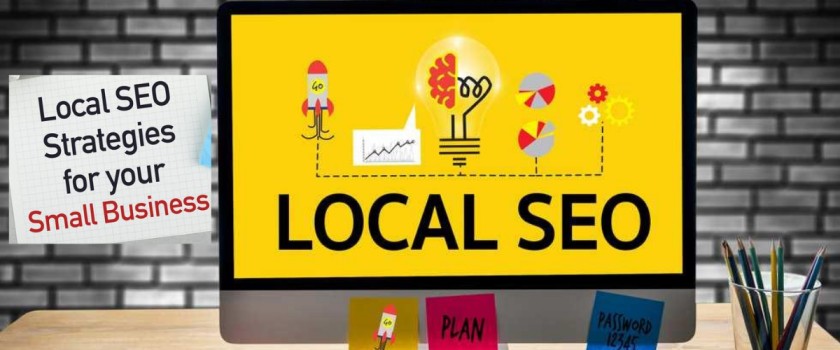Search has entered a new era where traditional SEO meets a smarter world of discovery powered by Generative Engine Optimization (GEO). As AI-driven tools and voice assistants reshape how people find answers, visibility now depends on clarity, authority, and trust, not just rankings.
Your audience no longer scrolls through pages. They ask conversational questions, and AI delivers instant answers. To appear in those results, your content must be structured, credible, and written in a way both humans and intelligent systems understand effortlessly.
In this blog, we’ll look at how SEO and GEO work together. We’ll also discuss how to optimize for AI search results. Plus, we’ll share strategies to boost your AI search visibility. Finally, we’ll cover ways to future-proof your digital presence with proven techniques. Let’s begin and uncover the exact steps that make your business visible in the age of generative search.
Understanding Generative Engine Optimization (GEO)

Generative Engine Optimization (GEO) is the next step in search engine optimization. It helps your content show up in AI-generated responses. These responses power modern tools such as Google AI Overviews, Bing Copilot, ChatGPT Search, and Gemini.
Traditional SEO improves your website’s ranking in organic search results. GEO focuses on aligning your content with how AI systems locate, comprehend, and generate information. Your goal is not to compete for a top spot on search results. Instead, aim to be the source that AI references, cites, or summarizes when answering user queries.
GEO focuses on structured data, conversational keywords, and natural language. It also emphasizes E-E-A-T: Experience, Expertise, Authoritativeness, and Trustworthiness to reach its goals. These elements help AI recognize your content as reliable, context-rich, and ready for inclusion in its generated summaries. In simple terms, SEO helps you rank first, while GEO helps you get referenced first and that’s where the future of search visibility is heading.
Why AI Search Visibility Matters for Every Business
Think about how many people now ask Google or voice assistants questions such as “What are the best marketing strategies for local businesses” or “Which yoga school offers 300-hour training in Goa.” They no longer scroll through multiple results. They expect a direct & trustworthy answer.
This is where AI Search Visibility plays a role. If your brand’s content is not recognized by generative engines, you lose visibility even if you have strong SEO. Being visible in AI summaries helps you:
- Reach users earlier in their journey: AI systems often show your brand when users first ask questions.
- Build trust faster: Showing up in AI results immediately positions your business as a credible and reliable source.
- Increase brand recall: When AI tools cite your content, users remember your name even if they don’t click right away.
- Future-proof your marketing: As search behavior changes with AI-powered answers, adopting GEO early gives your brand a strong competitive edge.
How To Optimize Content For AI Search Results
Visibility in AI search results depends on how well your content is structured, clear, and trustworthy. Let’s look at some practical steps that can help you optimize for AI-driven discovery while also improving your traditional SEO performance.
1. Start With Direct Answers
Always start every paragraph of your content with a brief, informative response to the question your readers may pose. AI tools favor texts where the question is answered first, followed by the background.
For example, if the question is What is Generative Engine Optimization, just give a concise answer to its significance afterward. This way, the content becomes immediately clear to both humans and AI systems.
2. Write in a Natural, Conversational Flow
People talk to AI tools in the same way they speak to another person. NLP techniques are used by all of the main AI-based generative engines to comprehend natural language. Because of this, content that appeals to actual users is more likely to be given priority. So your content should sound conversational yet professional. Use phrases like “how to,” “what is,” “why does,” or “best way to.”
These long-form, conversational keywords help AI recognize your content as a strong match for user intent. For instance:
- How to improve visibility in AI results
- What is the difference between SEO and GEO
- How to optimize content for AI search results
Such phrasing also improves voice search performance, a growing part of AI-powered queries. Additionally, don’t use the same search query twice. Instead, search for relevant terms to give AI more background and nuance. A paragraph should always be limited to no more than two or three sentences. For a higher readability score, all of your text must stay within this range. Make sure all of your material is clear and written in simple terms.
3. Strengthen EEAT Throughout Your Content
EEAT stands for Expertise, Experience, Authority, and Trustworthiness. These are the signals that tell both search engines and users your content is credible.
To demonstrate EEAT:
- Include author information and credentials
- Cite reliable sources and data
- Add examples or case studies from your work
- Maintain consistent brand identity across all channels
At Mount Web Technologies, professional writers and specialists first create and then review all blogs, ads, and landing pages to confirm their accuracy and relevance. This consistency strengthens trust and enhances visibility over the long term.
4. Use Structured Headings and Schema
AI systems read your page differently from humans. AI models will comprehend, analyze, retrieve, and ultimately display your content on their platforms more effectively with the help of this consistent and transparent data. They rely on clear headings, subheadings, and schema markup to understand the hierarchy of information.
Use H1 for the title, H2 for major sections, and H3 for subtopics. Add FAQ schema or Article schema so search systems can easily extract relevant passages. Structured formatting helps AI models quickly identify which part of your content answers the query best. This makes it easier to be highlighted in snippets, AIOs, or voice search results by letting search engines and LLM bots know what your material is made of. Make sure to create schema markups for:
- FAQs, Ratings, and Reviews
- Services or products
- Blog Posts and Articles
- Details about the Author
5. Build Contextual Depth
Instead of writing short blogs that only skim the topic, create comprehensive pieces that fully answer multiple related questions. Generative engines prefer pages that demonstrate subject depth.
Cover core topics such as:
- How SEO and GEO work together
- How to measure visibility in AI results
- Why user intent shapes AI-driven rankings
The deeper and more interconnected your content is, the stronger your topical authority becomes. Readers will find it easier to browse through if you use numbers or bullets, and you can offer comparisons, advice, or a procedure. Tables are a great way to show data, stats, and comparisons clearly. AI often pulls these out as exact pieces of information. Additionally, always start with a TL;DR or summary. It facilitates the reader’s and AI’s rapid comprehension of the key ideas and validates the return to or continuation of the subject.
6. Update Your Content Regularly
AI systems evaluate freshness. Outdated facts or missing data can reduce your visibility. Update your blogs every few months to include new research, current examples, or trends.
You can also repurpose content into videos, infographics, or short guides. Multimedia signals further strengthen your brand’s credibility.
7. Make Your Website Technically Accessible
Ensure your site loads fast, is mobile-friendly, and allows AI crawlers to access your content. Do not hide important text behind complex scripts or popups.
Maintain a clean URL structure, submit your sitemap, and use internal linking to connect related pages. Technical readiness helps your content remain discoverable across both traditional and AI-driven platforms.
Key Factors To Improve Visibility In AI Results
- Build Credibility Through High-Quality Content
AI systems favor content that is detailed, accurate, and trustworthy. The stronger your Search Engine Optimization (SEO) and Generative Engine Optimization (GEO) practices, the better the chance of your pages being cited in the summaries created by AI. If your website constantly offers high-quality content, then AI models will acknowledge it as a trustworthy source.
- Showcase Real Expertise and Authority
Both search engines and AI models assess your Experience, Expertise, Authoritativeness, and Trustworthiness to determine reliability. Highlighting qualified authors, transparent credentials, and topic-specific experience helps your brand earn stronger AI search visibility through GEO.
- Match Content to User Intent
AI engines interpret complex queries to give users direct answers. To optimize for AI search results, your content must anticipate real questions, provide clear explanations, and cover topics thoroughly. Building this topical depth improves your overall authority and strengthens both SEO and Generative Engine Optimization (GEO) outcomes.
- Brand mentions and citations
In the same way that backlinks power traditional SEO, brand mentions and contextual citations play a vital role in GEO. When trusted websites or media outlets reference your brand, it signals credibility to AI models. These digital votes of confidence help your business stand out as a trustworthy source in generative responses.
- User experience and engagement
A positive user experience indirectly improves your performance in AI-driven search. A clean site design, fast-loading pages, and intuitive navigation all contribute to longer user engagement. Over time, these behaviors enhance your authority metrics, which AI systems consider when identifying quality sources.
- Content structure and readability
AI interprets structured, scannable content more effectively. Use descriptive headings, numbered lists, short paragraphs, and clear formatting to make your pages easy to parse. Well-organized pages help users read better and make it easier for generative models to understand. This boosts both SEO and Generative Engine Optimization (GEO) results at the same time.
- Technical accessibility for LLMs
For large language models (LLMs) to recognize and cite your content, your site must be technically accessible. Ensure your pages use Schema markup, proper metadata, and a crawlable structure. A strong technical foundation helps search engines and AI models grasp your site’s context. This improves your long-term visibility on changing generative platforms.
How To Measure AI Search Visibility
Tracking visibility in AI-driven search requires new forms of analytics. Along with traditional SEO data, monitor how often your content is referenced or cited in generative summaries.
Metrics to Watch
- Brand citation share
Check how frequently your site or name appears in AI summaries or knowledge panels. - Query coverage
Review the variety of questions your content answers successfully. - Engagement and dwell time
Longer user sessions signal high-quality content that AI tools value. - Referral insights
Observe referral traffic from AI-powered browsers or platforms like Bing Copilot or Google AI mode. - Passage performance
Analyze which sections of your pages get the most visibility in AI overviews.
By studying these signals, you can identify which pieces of content are performing well and which need more optimization.
Common Mistakes That Reduce AI Visibility
- Writing long blocks of text without structure
Large paragraphs without subheadings confuse both readers and search systems. - Ignoring schema markup
Schema gives AI a clear understanding of your content’s structure. Without it, your visibility decreases. - Using overly complex or robotic language
Keep your writing simple, human, and engaging. Conversational clarity always wins. - Neglecting off-site signals
Mentions in articles, forums, or social posts increase your authority footprint. - Forgetting to refresh old content
Even well-performing blogs lose relevance if they are not updated regularly.
Avoiding these mistakes ensures your optimization efforts lead to consistent visibility in AI-powered search.
How Mount Web Technologies Helps You Stay Visible
At Mount Web Technologies, we specialize in helping businesses grow through SEO, paid ads, and advanced GEO strategies. We blend technical know-how with creative storytelling. This way, your content resonates with both people and algorithms.
When you work with us, we check your website for GEO readiness. We find conversational keyword chances and update your content to fit current search habits. We also build off-site brand signals that help AI recognize your authority across the web. Our clients across the United States and India trust us for transparent reporting, measurable growth, and a partnership that adapts with every shift in technology.
Ready to see how visible your business really is? Book a consultation with our experts today and let us help you optimize for AI search results and dominate the next generation of search.
Final Thoughts
The evolution of search means businesses must think beyond keywords and backlinks. Generative Engine Optimization bridges the gap between traditional SEO and the intelligent world of conversational discovery.
To succeed, your content needs to be accurate, human, and easy to understand. It should answer real questions clearly, carry expert credibility, and be structured in a way that both people and machines can interpret instantly.
If your business wants to grow its presence in Google’s AI mode and across generative platforms, the time to act is now. At Mount Web Technologies, we help you connect strategy, structure, and storytelling. This way, your brand shines wherever your customers look. Contact us today to set up your free consultation. Start your journey toward better visibility, more engagement, and lasting growth.
Frequently Asked Questions
- What is the main difference between SEO and GEO?
SEO helps your website rank higher in traditional search results through on-page optimization and backlinks. GEO ensures your content is selected and cited in AI-powered search and voice-based results. - How long does it take to see improvement in AI search visibility?
You may begin to see changes within a few weeks of structured optimization. However, consistent updates and brand citations build long-term authority that strengthens your visibility over time. - Do backlinks still matter for AI search?
Yes. Backlinks are a strong trust signal. They support both SEO and GEO by proving that your content is credible and recognized by others. - Can I improve AI search visibility without rewriting all my content?
Yes. You can start by restructuring existing pages, adding FAQs, improving headings, and ensuring schema markup. Then gradually update the tone and clarity for conversational queries. - Why should I hire professionals for GEO optimization?
Because GEO combines technical SEO, data structure, and content strategy. Partnering with experts like Mount Web Technologies saves time. It also makes sure every part of your digital presence matches how modern search engines operate.



